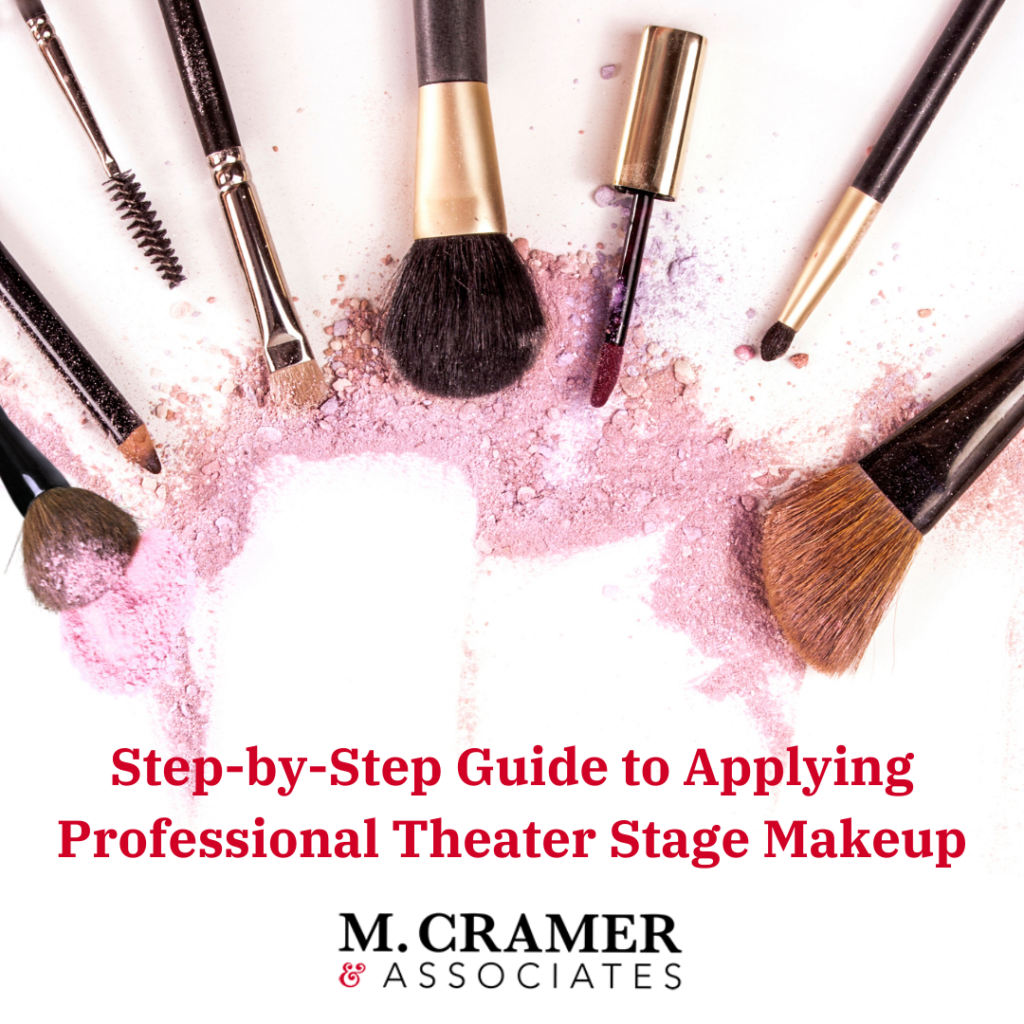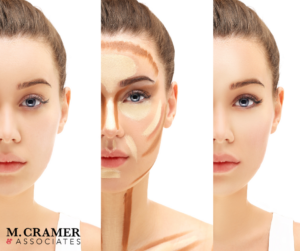
When the curtain rises, and the lights dim, the magic of theater comes to life. One essential element that enhances this scene is the art of stage makeup for theater. Whether you’re a seasoned performer or a beginner actor, mastering the application of professional stage makeup for theater is a skill that can elevate your performance and captivate your audience. Follow along with this step-by-step guide brought to you by M. Cramer & Associates, your trusted partner in theatrical supplies.
Step 1: Prepare your Face to Apply Stage Makeup
Before you start applying makeup, it’s essential to prepare your face as a blank canvas and understand how to apply stage makeup. Wash your face thoroughly, taking extra care to exfoliate. It is important to apply a moisturizer before beginning any makeup application in order to protect your skin and help the makeup last longer. The Mehron Before and After Moisturizer Lotion is recommended for its additional benefits with vitamin E and aloe vera. Be sure to apply it over your entire face and neck and use a colorless balm on the lips. Many actors use a primer in addition to moisturizer, especially if they are prone to oily skin. For best results, use the Mehron Velvet Finish – Pre-Foundation Skin Primer. If you use a moisturizer, be sure to let it sit for about a half hour to ensure that the makeup will apply more easily.
Step 2: Applying Foundation to Withstand Stage Lighting
It often works best to use a foundation that is a relative match for your skin tone but is one or two shades darker to ensure that you don’t look pale on stage. If the character you’re playing is meant to look pale or ghostly stick with cold, pale tones.
Cream foundations often last longer than powder and may be easier to make it look even. Ben Nye Color Cake Foundation is a creamy formula that is designed for every skin type., and to apply, you can use the Bye Nye Buffers and Blenders Brushes for best results. If you use a sponge, dab it into the cream and use the same technique to apply it to your face, making sure it is evenly spread across the face and neck. Take extra care at the hairline to blend it in evenly. The same goes for blending foundation from the jawline to the neck.
Pro-tip for how to apply stage makeup: The heaviness of the foundation will depend on the character and the size of the venue. Generally, the larger the theater (and farther away the audience), the slightly heavier the foundation, and the opposite holds true for small theaters and close audiences.
Step 3: Applying Blush, Contour, and Highlight

When applying stage makeup for theater, focus on enhancing your facial features for the stage by contouring and adding blush. Use a contour shade slightly darker than your skin tone to define your cheekbones and jawline. Apply blush to the apples of your cheeks for a healthy flush, then apply highlights on top of your cheekbone to enhance the natural glow of the high points of the face. When applied correctly, these techniques work together to create a harmonious and balanced makeup look, emphasizing your best features and achieving a desired overall effect, whether it’s a chiseled and structured appearance or a radiant and youthful one.
Blush works to provide more defined contours to the face on stage. While men are best served by a terra cotta color, younger boys can utilize pink or red. Women and girls can both use pink or red blush. For best application, smile wide and apply the blush to the apples of your check with a gentle upward sweeping motion with the brush.
M. Cramer & Associates has a wide array of Creme Blush and Contours to suit every skin tone and desired look.
Step 4: Applying Eye Shadow
Natural tones such as browns, tans, and nude pinks work best for eye shadow unless a different color is needed for a specific character. Strong pigmentation is ideal for stage makeup for theater and Ben Nye’s Eye Shadow Compacts are best to get a bright pigmentation. Many productions will utilize brighter colors on the eyes of the girls. Start with a light skin tone and gently cover the area of skin below your brow. Then, put a medium shade of brown on the eyelid and sweep it up and out. Next, line your crease with a darker brown and your tear duct with a white color.
Step 5: Theater Liquid Eyeliner
As your next step, you are ready to get creative with eyeliner. While you can use a pencil liner, Ben Nye’s Liquid Eye Liners are smudge and water-resistant and provide a more prominent line that can be seen from a distance.
Males should use brown eyeliner while women can use brown or black. A white eyeliner can be used to make the eyes look bigger and brighter. Apply eyeliner by carefully extending it up and outward beyond the edge of your eye to subtly merge it with the line of your lashes for a more open look.
Step 6: Applying Lip Liner and Lipstick
You should start with the lip liner before applying the lipstick. When lining the mouth with a lip liner, subtle is better at enhancing the natural contours of the individual’s mouth. While men should stick with natural or nude lipstick shades, women have a full palette depending on the character, time period, and mood of the piece. After lipliner, you can fill in the lips with lipstick. It is most common to have the lipstick match the eyeliner and lip liner. Artists often use more than one color to finish lips and the Ben Nye One-For-All Lip Color Palette offers unlimited options.
Step 7: Setting the Stage Makeup for Theater
The process of “setting” the makeup is needed to make it last longer and prevent running or smudging when the actor sweats. You can choose to set the makeup with a powder or spray. M. Cramer & Associates has a standard Mehron Setting Powder available, as well as a Ben Nye LiquidSet setting spray made for extra holding power. With translucent powders, use a plump brush to lightly sweep a thin coating of powder across the face being sure to do the same with the eyes, nose, mouth, and neck. Remove any excess powder by tapping the brush on a paper towel before applying the powder to the face and neck. When using a setting spray, hold the spray bottle 6 inches away from the face and spray multiple times to cover the entire face, then fan the face to dry.
Step 8: Applying Mascara
It’s best to use mascara the same color as the eyeliner. A number of experts suggest applying mascara after you set the makeup to avoid a snowflake effect. It can help to use the opposite hand to lift the eyelid slightly from the position of the eyebrow. Using the other hand, apply the mascara using an upward sweeping motion to the eyelash being careful not to let the lashes clump together.
Step 9: Cleanup and Final Review
After washing your hands and once your makeup is complete, step back and assess your look in natural light. Make any necessary adjustments to ensure your makeup looks balanced and suits your character.
Mastering the art of applying professional stage makeup for theater is a journey that requires practice and attention to detail. With the right tools, products, and techniques, you will become an expert at how to apply stage makeup. At M. Cramer & Associates, we understand the importance of high-quality theatrical supplies, and we’re here to support your creative endeavors. Break a leg, and let your makeup shine as brightly as your performance!

